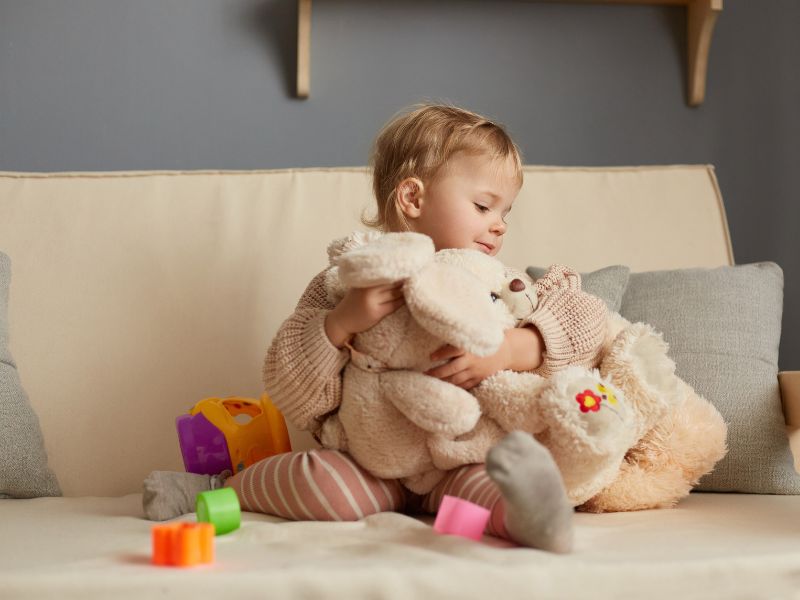Wait a minute! What’s the title of this article? Positive time-out? There’s no such thing!
Well, folks – I hope that by the time you finish reading this article, you come away with a different perspective about what time-out has been traditionally, and how it can be positive for child and parent (or teacher), a learning experience, and a way to diffuse a tense situation.
Traditionally, a child has been “put into” time-out because of “bad” behavior. He or she is sent to the corner or to their room for a certain length of time. When they are invited to return to the group, the adult expectation is that the issue is resolved – until it happens again a day or a week later. And the cycle begins again.
What has the child learned?
If I do something “bad”, I will probably be yelled at and punished, i.e. told to go to “time-out”. Then, after a long time, I’ll be invited to come back to the family or classroom. In the meantime, I am feeling angry and resentful toward the person who made me go to “time-out”. And I may start planning what I’ll do next. Have I learned how to break away from a tense situation? No. Have I had a positive experience? No. Have I learned anything – positive? No. What I have learned is that adults are in control and have power. How I feel is not important.
What has the adult learned?
I cannot and will not tolerate the child’s “bad” behavior. I have to control it by using “time-out”. Have I had a positive experience? No. Have I tried to diffuse a tense situation? No. Have I learned anything – positive? No. I am bigger and older, and it is the child’s duty to do (or not do) what they have been told.
How did adults get the idea that making a child feel badly about their behavior is going to make their behavior change for the better? This is a recipe for a punitive time-out.
So – what to do?
How can we turn a potentially explosive situation into something that is positive for everyone? How can we be kind and respectful, learn something, and feel like we can manage stressful moments?
“Positive time-out” may provide some solutions. The goal is not to punish the child or assert the power of the adult, but to provide an opportunity for children to learn to recognize and soothe their big feelings. Once the child and the parent have had a chance to cool down, both will be ready to talk about what went wrong and problem-solve for the future.
Here are some steps to help you get started with positive time-out:
- Find a cozy place in your home where you can place a pillow, blanket, squishy toys, books, a stuffed animal. You can even place a sign that says, “Cozy Corner” or “Feel-Good Place” or “Antarctica.” Tell your child that this is a special place to go to when they need to relax and be alone or be with a parent.
- It is important to take into consideration the child’s age and developmental level. Young children behave as they are supposed to – as young children. They do not yet understand what is “appropriate” or “acceptable.” Children younger than 3 ½ years old are not developmentally ready to understand the reasoning. Therefore, if they are not behaving in an “acceptable” way, they probably need to be removed from the situation and distracted to do something different. If the child is agitated and needs to calm down, the parent can offer to go with the child to the “Cozy Corner” to spend a few minutes. In this space, you can listen to some relaxing music or hug each other or just sit quietly until they feel better. The idea is to help the child calm down, not make them feel bad about what happened, and to reassure them that you are there to help them work through their feelings.
- With an older child, offer the opportunity to go to the “Cozy Corner” where they can cool down. If they refuse to go to the “Cozy Corner,” the parent can say something like “I am feeling very upset right now, so I am going to my room for a little while so that I can calm down.” In this way, you are modeling and acknowledging not only how you are feeling (and that it’s OK to have this feeling) and how you are going to take care of yourself. In this way, nobody is made to feel “bad,” nobody is being punished for what was done and/or feeling a certain way, and both parties are taking care of the “needs of the situation” (getting to a calmer, more rational state).
- When your child and you have calmed down, you can talk about what happened and brainstorm ideas for future reference. When your child is involved in problem-solving, they feel that they are being listened to and are more willing to cooperate.
- It is important to remember that no parenting tool works in every situation, and positive time-out may not always be the best choice. Have as many alternative, non-punitive tools in your parenting toolbox for the many situations that will arise during your parenting journey.
For additional resources on Positive Time-Out, as well as other positive parenting information, please check out:
- “Positive Discipline for Preschoolers” (Jane Nelson, et.al.)
- “Positive Time Out: And Over 50 Ways to Avoid Power Struggles in Homes and Classrooms” (Jane Nelson)
- “Parenting with Courage and UNcommon Sense” (Linda Jessup and Emory Luce Baldwin)
- “The Good News About Bad Behavior” (Katherine Reynolds Lewis).
These books have a wealth of information with strategies to help parents (and teachers) fill their toolboxes with many useful ways to help children develop into responsible, respectful and resourceful human beings.
Happy Parenting!


